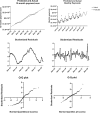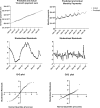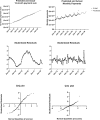Sepsis Among Medicare Beneficiaries: 3. The Methods, Models, and Forecasts of Sepsis, 2012-2018
- PMID: 32058368
- PMCID: PMC7017950
- DOI: 10.1097/CCM.0000000000004225
Sepsis Among Medicare Beneficiaries: 3. The Methods, Models, and Forecasts of Sepsis, 2012-2018
Abstract
Objective: To evaluate the impact of sepsis, age, and comorbidities on death following an acute inpatient admission and to model and forecast inpatient and skilled nursing facility costs for Medicare beneficiaries during and subsequent to an acute inpatient sepsis admission.
Design: Analysis of paid Medicare claims via the Centers for Medicare & Medicaid Services DataLink Project (CMS) and leveraging the CMS-Hierarchical Condition Category risk adjustment model.
Setting: All U.S. acute care hospitals, excepting federal hospitals (Veterans Administration and Defense Health Agency).
Patients: All Part A/B (fee-for-service) Medicare beneficiaries with an acute inpatient admission in 2017 and who had no inpatient sepsis admission in the prior year.
Interventions: None.
Measurements and main results: Logistic regression models to determine covariate risk contribution to death following an acute inpatient admission; conventional regression to predict Medicare beneficiary sepsis costs. Using the Hierarchical Condition Category risk adjustment model to illuminate influence of illness on outcome of inpatient admissions, representative odds ratios (with 95% CIs) for death within 6 months of an admission (referenced to beneficiaries admitted but without the characteristic) are as follows: septic shock, 7.27 (7.19-7.35); metastatic cancer and acute leukemia (Hierarchical Condition Category 8), 6.76 (6.71-6.82); all sepsis, 2.63 (2.62-2.65); respiratory arrest (Hierarchical Condition Category 83), 2.55 (2.35-2.77); end-stage liver disease (Hierarchical Condition Category 27), 2.53 (2.49-2.56); and severe sepsis without shock, 2.48 (2.45-2.51). Models of the cost of sepsis care for Medicare beneficiaries forecast arise approximately 13% over 2 years owing the rising enrollments in Medicare offset by the cost of care per admission.
Conclusions: A sepsis inpatient admission is associated with marked increase in risk of death that is comparable to the risks associated with inpatient admissions for other common and serious chronic illnesses. The aggregate costs of sepsis care for Medicare beneficiaries will continue to increase.
Figures



Comment in
-
Predicting Sepsis Mortality and Costs Using Medicare Claims: A Method to the Madness.Crit Care Med. 2020 Mar;48(3):424-426. doi: 10.1097/CCM.0000000000004227. Crit Care Med. 2020. PMID: 32058378 Free PMC article. No abstract available.
References
-
- Gaieski DF, Edwards JM, Kallan MJ, et al. Benchmarking the incidence and mortality of severe sepsis in the United States. Crit Care Med 2013; 41:1167–1174 - PubMed
-
- Kaukonen KM, Bailey M, Suzuki S, et al. Mortality related to severe sepsis and septic shock among critically ill patients in Australia and New Zealand, 2000-2012. JAMA 2014; 311:1308–1316 - PubMed
Publication types
MeSH terms
LinkOut - more resources
Full Text Sources
Other Literature Sources
Medical

